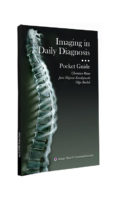
Over 25 pocket guides, 100% focused on pharmaceutical promotion with an average of 100 color illustrated pages, written by renowned doctors from USA, UK and Canada.
© HC-HealthComm

Guía de bolsillo sobre Alergias
Chapter 1: Allergy Prevalence and Epidemiology. Allergies and allergic diseases are inappropriate immune responses to innocuous substances termed “allergens”. An assortment of normally harmless substances have been identified as allergens, including airborne dust or pollen and certain foods and drugs. Allergens typically affect the first organ system they contact, where …
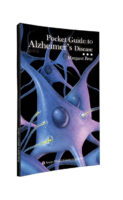
Libro de bolsillo sobre la enfermedad de Alzheimer
Introduction. Alzheimer disease (AD) is the most common cause of dementia in the elderly and accounts for 50 to 80% of dementia cases (Alzheimer’s Association, www.alz.org). It is a degenerative neurologic disease with progressive cognitive, behavioral and motor impairment manifested as increased deficits regarding attention, executive function, language, memory, and …

Guía de bolsillo para el Trastorno Bipolar
What is Bipolar Disorder? Bipolar disorder (BPD), formerly known as manic-depressive disorder, is a complex recurrent mood disorder that causes extreme mood shifts. BPD not only affects a person’s mood, but also one’s energy, thought processes, and functioning across all life domains. The illness affects men and women about equally. …
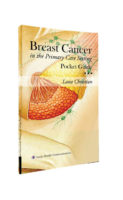
Guía de bolsillo para Cáncer de mama en el Entorno de Atención Primaria
Introduction Breast cancer is a vast topic that one might not immediately associate with primary care. So what is most important for primary care physicians (PCPs) to know about it? That is the aim of this guide. Carcinogenesis is a multiyear process. Genetics, factors specific to the host tissue’s environment …
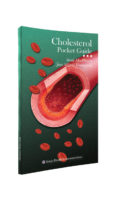
Guía de bolsillo sobre Colesterol
Introduction Cholesterol is a major structural component of all animal cells and is essential to mammalian cell function. In humans, cholesterol is an important molecular building block for steroid hormones, bile salts, and vitamin D. It is produced by the human body or digested and absorbed through the small intestine …
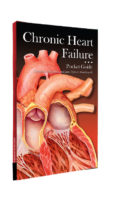
Guía de bolsillo para Insuficiencia Cardíaca Crónica
Introduction to Chronic Heart Failure Heart failure (HF) is a chronic, progressive pathophysiologic condition in which the heart cannot generate an adequate cardiac output, leading to insufficient perfusion of tissues or elevated diastolic pressure of the ventricles, which in turn increase pulmonary blood vessel pressure (McCance and Huether, 2010). In …
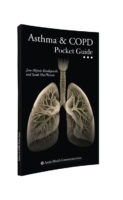
Guía de bolsillo sobre enfermedad pulmonar obstructiva crónica y asma (EPOC)
Chapter 1: Introduction to Chronic Obstructive Pulmonary Disease and Asthma. Chronic obstructive pulmonary disease (COPD) and asthma are two of the most common lung diseases worldwide. Both diseases are characterized by airflow obstruction and inflammation of the airways. There is considerable overlap between the medical conditions, yet COPD mainly comprises …

Guía de bolsillo sobre trastornos psiquiátricos comunes
Introduction A psychiatric disorder is defined as “a syndrome characterized by aclinically significant disturbance in an individual’s cognition, emotionalregulation, or behavior that reflects a dysfunction in the psychological,biological, or developmental processes underlying mental functioning”(American Psychiatric Association, 2013). The recognition ofpsychiatric disorders dates back to Hippocrates (460-377 BC), whowas the first …
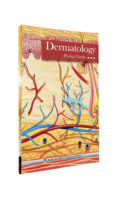
Guía de bolsillo de dermatología
Chapter 1: Introduction to Skin Diseases The skin is part of the integumentary system and covers the rest ofthe body systems and organs. In addition to protecting the bodyfrom mechanical, chemical, and microbial damage, the integumentarysystem performs a variety of other tasks, including cushioningdeeper tissues, keeping water and other molecules …

Libro de bolsillo de Diabetes
Introduction. Diabetes is a chronic illness that is globally of epidemic proportions. According the most recent statistics 1 in 10 adults worldwide suffer from diabetes, that is, a global average prevalence of approximately 10%, although in some nations, for example, Pacific Islands one third of the population have diabetes.1,2,3 Over …
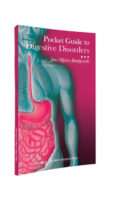
Guía de bolsillo del sistema digestivo
Chapter 1: The Digestive System. The overall function of the digestive system is to transfer the nutrients in food from the external environment to the internal environment, where they can be distributed to the cells of the body via the circulation. The cells of the body require adequate amounts of …

Guía de bolsillo para dislipidemia
Introduction. Dyslipidemia is a group of disorders characterized by changes in plasma lipid or lipoprotein quantity or quality (Marais, 2013). Dyslipidemias may be genetically acquired, or arise from other medical conditions or external factors. They range from common, mild disorders to extremely rare and severe forms of disease. Dyslipidemia is …
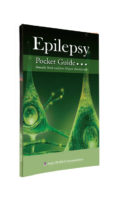
Guía de bolsillo para la epilepsia
Chapter 1: Introduction. Epilepsy is a chronic neurological disorder that is characterized by sudden recurrent episodes of sensory disturbance. It can lead to loss of consciousness and/or convulsions. The term “epilepsy”encompasses a wide variety of seizure disorders. According to the Epilepsy Foundation, it is one of the most common neurological …

Guía de bolsillo sobre el trastorno de ansiedad generalizada
What is Generalized Anxiety Disorder? Generalized anxiety disorder (GAD) is a chronic, fluctuating Axis I mental health disorder that is characterized by excessive, uncontrollable worry or anxiety about many circumstances, events, and attempts to deal with “what if ” scenarios. The symptoms are severe enough to interfere with a person’s …
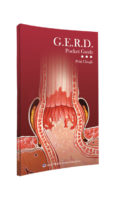
Guía de bolsillo para el trastorno de reflujo gastroesofágico (ERGE)
Definition and Prevalence: Gastro esophageal reflux disorder (GERD) is a commonly occurring disorder in the modern world. It is primarily defined as “a condition that develops when the reflux of stomach contents causes troublesome symptoms and/or complications.” The Montreal definition of the disorder was developed by an international consensus group …
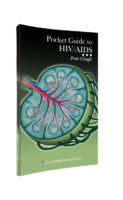
Libro de bolsillo sobre VIH / SIDA
HIV/AIDS The Global Pandemic. An unusual rise in opportunistic infections and rare malignancies observed in young homosexual men led to recognition of a new disease known as Acquired Immune Deficiency Syndrome (AIDS) in the year 1981 by the Center for disease communication and prevention (CDC). (1) The causative agent was …

Guía de bolsillo sobre la infección por el virus del papiloma humano (VPH)
Introduction The Human Papillomavirus (HPV) is best known as the etiological agentof cervical cancer in women. Worldwide, cervical cancer is the secondmost common form of cancer in women. However, HPV can causemany more diseases including: genital warts, vulvar cancer, vaginalcancer, head and neck cancers, and anal cancer. The most common …
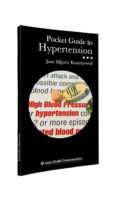
Libro de bolsillo sobre hipertensión
Introduction. Hypertension is a chronic condition in which arterial blood pressure is elevated. Arterial blood pressure is determined by measuring systolic and diastolic pressures. Systolic pressure is defined as the maximal pressure exerted on the aorta when it receives blood pumped from the left ventricle. Diastolic pressure refers to the …
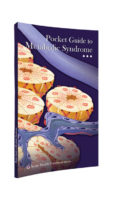
Libro de bolsillo sobre el síndrome metabólico
Introduction. Metabolic syndrome is a term used to describe a particular cluster of health problems that were first identified in 1988 by Gerald Reaven, an endocrinologist at Stanford University.1 He originally called it syndrome X, and at various times the syndrome has also been referred to as dysmetabolic syndrome, insulin …

Guía de bolsillo para migraña y dolor de cabeza
Introduction. Headache is a painful and disabling condition characteristic of primary headache disorders. It also occurs secondarily to a considerable number of other conditions. A wide range of headache types have been identified and described in medical literature. Primary headache disorders are described as conditions wherein the headache is the …

Libro de bolsillo del sistema nervioso
Introduction. The nervous system is a complex network of nerves and cells that carry messages to and from the brain and spinal cord to various parts of the body. The nervous system includes both the central nervous system (CNS) and peripheral nervous system (PNS). The CNS is made up of …

Guía de bolsillo para osteoporosis
Introduction. Osteoporosis is a systemic skeletal disorder that is characterized by progressive low bone mass and deterioration of bone tissue. This causes bone fragility and increased fracture risk in elderly populations. The worldwide prevalence of osteoporosis is estimated at approximately 200 million, and the WHO (World Health Organization) estimates that …

Nuestros perros
Introduction. The evolution of domestic dogs is about 300,000 years ago. The canis is descended from the wolf, which became Canis lupus till turning into the currently known domestic dog about 12,000 years ago. Apparently, the process of domestication of wild dogs dates from the ice age (approximately 40,000 years …
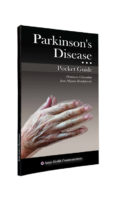
Parkinson
Chapter 1: Introduction to Parkinson’s Disease Parkinson’s disease (PD) is a chronic, progressive, neurodegenerativedisorder that clinically manifests at >60 years of age. In Western medicalliterature it was described by the prominent Greek physician and surgeonGalen of Pergamon as “shaking palsy” in AD 175. Despite its ancientorigins, PD was not officially …
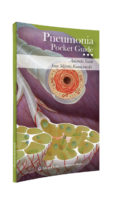
Guía de bolsillo para neumonía
Chapter 1: Introduction Pneumonia Prevalence and Epidemiology Pneumonia is a potentially serious infection of the lung that is most commonly caused by a bacteria or virus. When the immune system responds to the bacteria or virus that has invaded the lung, the alveoli, air sacs in the lung that facilitate …

Guía de bolsillo de Hemoglobinuria Nocturna Paroxística PNH
Chapter 1: An Introduction to Paroxysmal Nocturnal Hemoglobinuria. Paroxysmal nocturnal hemoglobinuria (PNH) was first described as a distinct and life-threatening entity in 1882. The clinical hallmark of PNH, nocturnal hemoglobinuria, has fascinated generations of physicians and led to the discovery of the alternative complement pathway, identification of the membrane proteins …
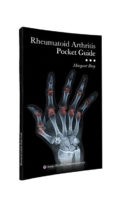
Libro de bolsillo de Artritis Reumatoide
Introduction. Rheumatoid arthritis (RA) is an inflammatory autoimmune disease that results in significant functional disability due to progressive and widespread joint destruction and soft tissue damage, not only in the limbs but also the inflammatory processes can ultimately have an effect on most organ systems in the body, with devastating …

Guía de bolsillo para Accidente Cerebrovascular
Introduction. Stroke is defined by the World Health Organization (WHO) as a clinical syndrome consisting of “rapidly developing clinical signs of focal (at times global) disturbance of cerebral function, lasting more than 24 hours or leading to death with no apparent cause other than that of vascular origin”.1 Every year, …
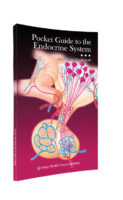
El sistema endocrino
Introduction. The endocrine system is a network of glands that secrete hormones directly into the bloodstream, controlling physiological events throughout the body (Figure 1.1). Endocrine function and hormone action mediate long-term effects by acting on all cellular processes and systems. They influence growth and development, tissue function, metabolism, reproduction, sexual …
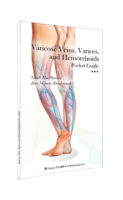
Guía de bolsillo para venas varicosas, várices y hemorroides
Chapter 1: An introduction to venous disease: Venous disease is a group of medical disorders that comprise diseased, damaged, or dysfunctional veins. A venous disease may range from a mild cutaneous disorder to life-threatening vascular malformations or hemorrhage. They include telangiectasias, incompetent reticular veins, varicose veins, chronic venous disease, varices, …


